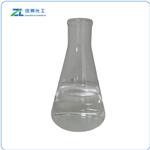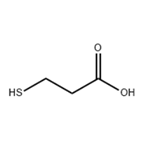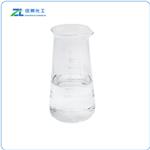3-Mercaptopropionic acid is a liquid, and doses between 30 and 60 mg/kg can be used for IP seizure induction throughout development. 3-mercaptopropionic acid (3-MPA) is a convulsant and potent GAD1 inhibitor, which could inhibit the migration and invasiveness of oral cancer cells. Considering that inhibition of GAD1 impaired GABA-mediated immunosuppression, 3-MPA was also demonstrated to synergize with ICB treatment to exert better anti-tumor efficacy. Such a combination strategy could benefit the treatment of cancer types with elevated GAD1 expression. Since 3-MPA has not been approved for clinical use, it is urgent to discover novel GAD1 inhibitors that are more applicable to future clinical studies.
clear colourless to yellowish liquid after melting
A compound suitable for amino acid analysis by means of OPA
3-Mercaptopropionic acid is widely used in food and beverage industries as a flavoring agent. It is used in the production of PVC stabilizers, which are used as chain transfer agents in polymerizations. It can be used as primary or secondary, color stabilizer in combination with phenolic antioxidant for polymers. It acts as a sulfide ion equivalent and is utilized in the preparation of diaryl sulfide from aryl iodide.
ChEBI: A mercaptopropanoic acid that is propanoic acid carrying a sulfanyl group at position 3.
3-Mercaptopropionic acid (3-MPA) is used to produce hydrophilic SAMs, which are terminated with carboxylic acids and can be further functionalized to introduce more complex end groups such as enzymes for biosensor applications. SAMs of 3-MPA are capped on ZnSe quantum dots for the electrochemical detection of dopamine. 3-MPA is used as a capping agent on CdTe quantum dot nanocrystals (QD NCs) for use as labeling materials in biomedical applications. It can also be used to modify the surface of iron oxide nanoparticles (Fe2O3) in the extraction and preconcentration of Al3+ and Cr3+ ions from different biological samples.
3-Mercaptopropionic acid (3-MPA) is used as a self-assembled monolayer (SAM) with a thiol and carboxylic groups. It has short carbon chains and is mainly used as a capping agent on a variety of nanoparticles.
3-Mercaptopropionic acid is a blocking drug that causes an increase in sleep and a decrease in wakefulness. A related finding is that nipecotic acid also increases the time needed for isoflurane to induce loss of consciousness, whereas 3-mercaptopropionic acid decreases anesthesia induction time[1].
[1] Thakkar, M. and R. McCarley. “Neurochemistry of Sleep and Wakefulness: Histamine in the control of sleep–wakefulness.”Basic Neurochemistry (Eighth Edition) (2012).



